This collection comprises over 14,000 artefacts recovered from World Heritage Listed KAVHA (Kingston and Arthur’s Vale Historic Area). During the restoration phase of KAVHA archaeological digs occurred in the buildings, privies of the houses along Quality Row and various trenches. What was recovered is a treasure trove of artefacts covering all settlements on the island. However the majority of objects relate to the cruel Second Settlement running from 1825 to 1856. This collection is on display in the Commissariat Store and No. 10 Quality Row.
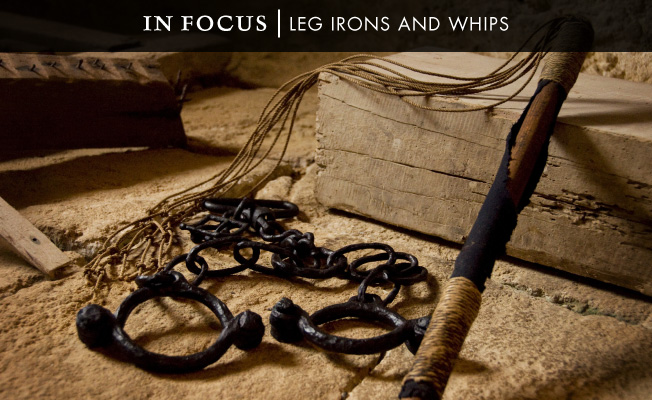
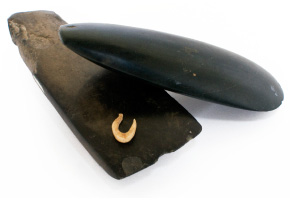
Polynesian Adze’s and Fish Hook
The earliest material in our museum relates to the Polynesians who were here between 750 and 1500. Archaeological expeditions conducted by the Australian National University provided much of the knowledge of this settlement. The collection includes a number of adzes, adze pieces, polished flakes and worked pieces, and a beautiful hand carved marine ivory or possibly elephant seal, fish hook.
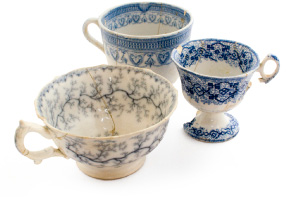
Ceramics
Our ceramics collection is unique due to the large number of makers, styles and types of china recovered. Mostly found in the privies behind the houses along Quality Row, each piece has been painstakingly identified then pieced together. The collection includes Chinese export porcelain sherds and bowls from the First Settlement. The majority of the collection is of items brought here during the Second and early Third Settlements. They include tea and coffee cups, mugs, plates, bowls, jugs and vases.
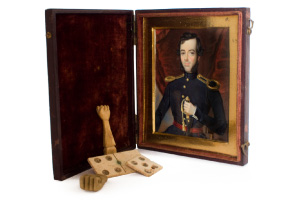
Portrait of Ensign Best and Games Pieces
Ensign Abel Dottin William Best served on Norfolk Island from August 1838 to April 1839 with the 80th Regiment. He kept a journal during this time detailing many of the diversions of the Officers – shooting, cliff walks, picnics, fishing, bathing, balls and the weather. We read that Officers indulged in recreational past times including board games. The delicate wood and ivory dominoes were found in the Surgeon’s Quarters and Government House. The small bone or ivory carved hands are thought to be some sort of games pieces, perhaps from a halma set?

Building materials
The Second Settlement was marked by the extensive building programs, the beautiful legacy of which is still with us today. Many artefacts relate to this phase such as nails, timber pieces, bolts and sandstone carvings. The Superintendent of Works, like his modern day counterparts, organised building programmes with precision. Plans were prepared, a range of tradesmen and labourers brought together, work was estimated, materials were acquired and the project costed.
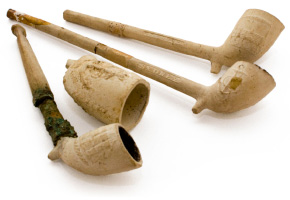
Clay Pipes
For the poor convict souls during the infamous Second Settlement, a puff of tobacco was a forbidden luxury. One of the few places where you could get away with smoking was in the Civil Hospital. Convicts could obtain tobacco by trading goods and services with civil and military staff. Pipe stems could also produce a soft high whistle which could alert fellow convicts of an overseer's presence – and the safest place to throw your pipe was down the privy. About a quarter of the approximately 250 pipes in the collection were found in the Civil Hospital privy.




